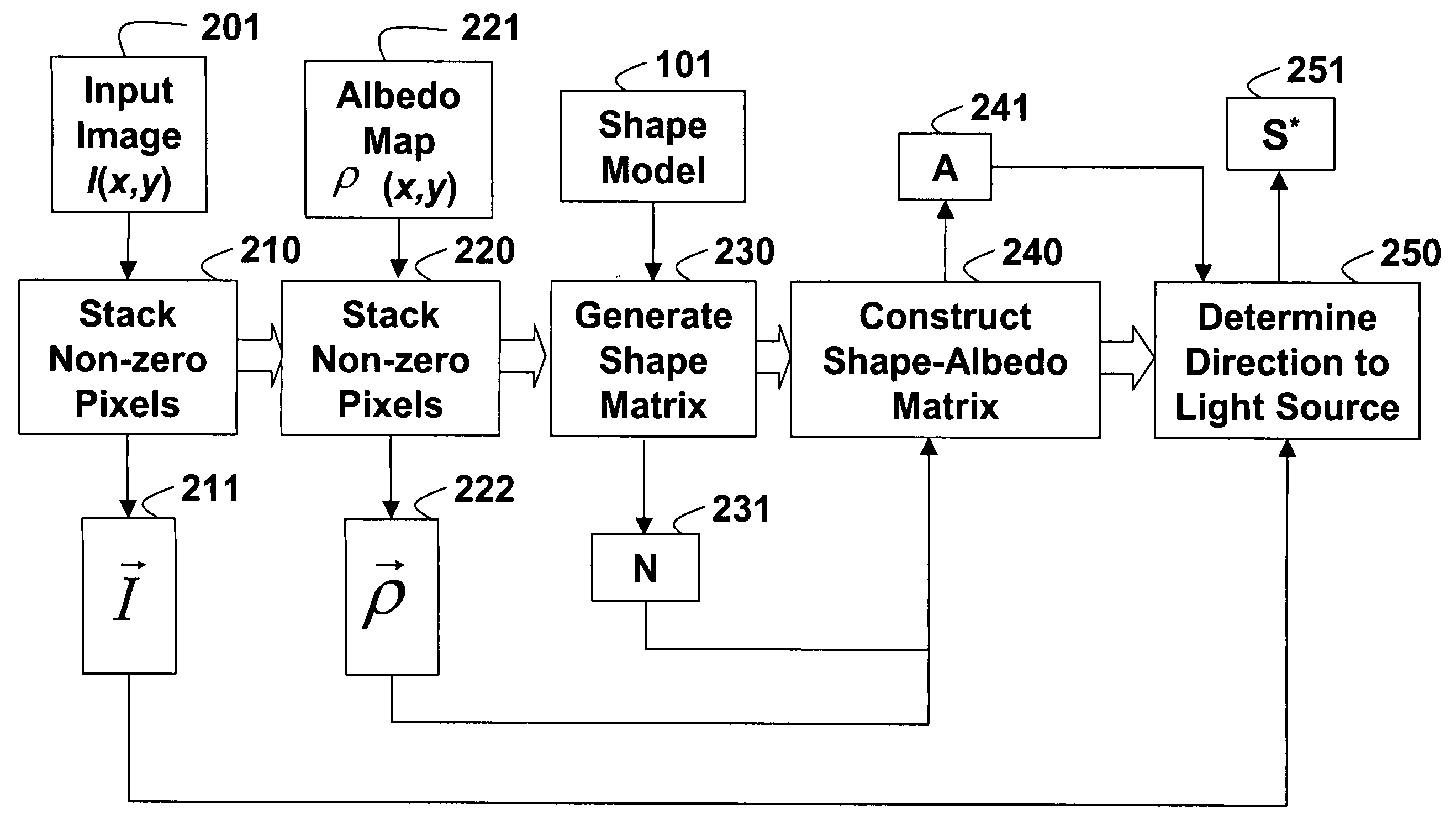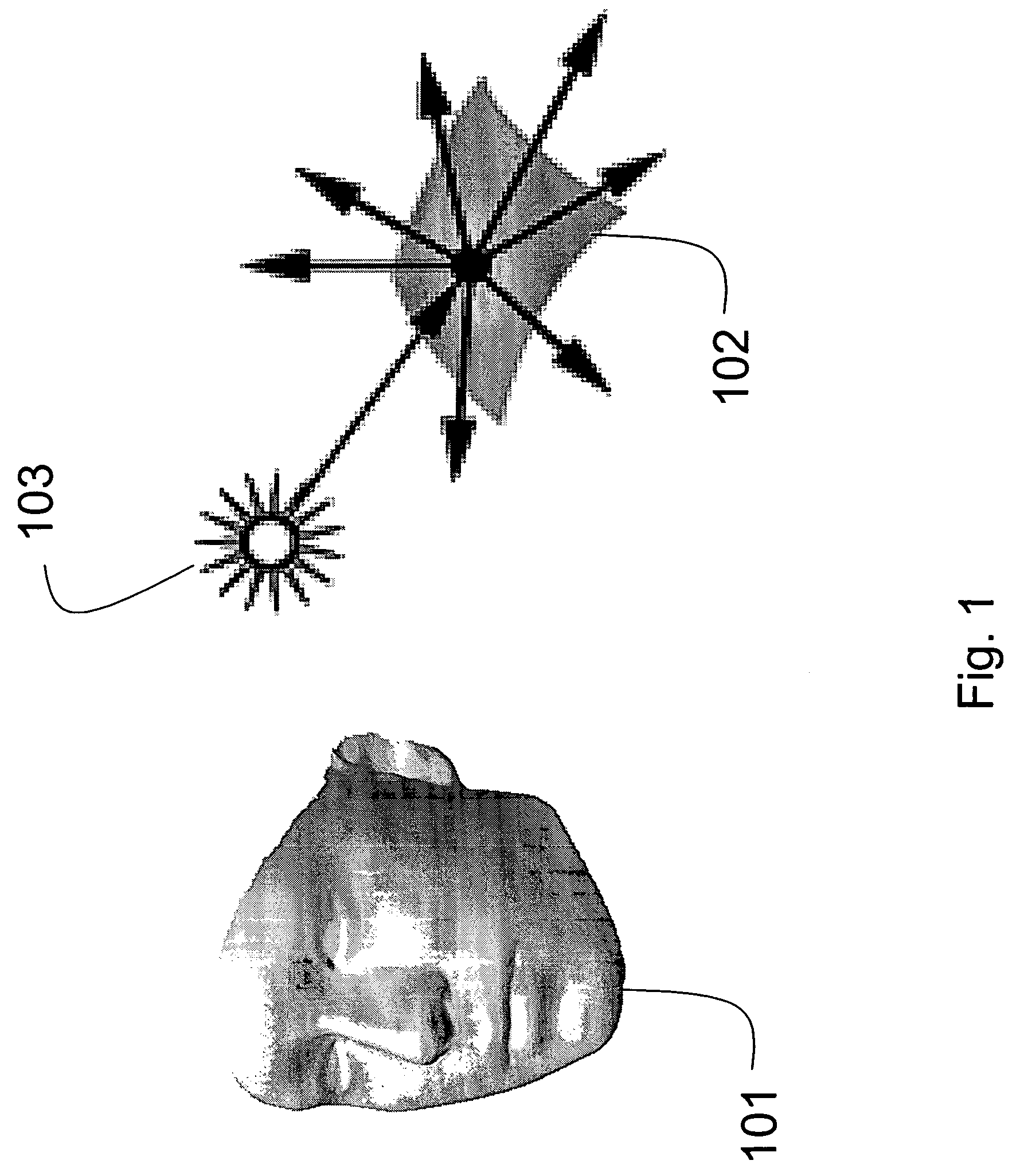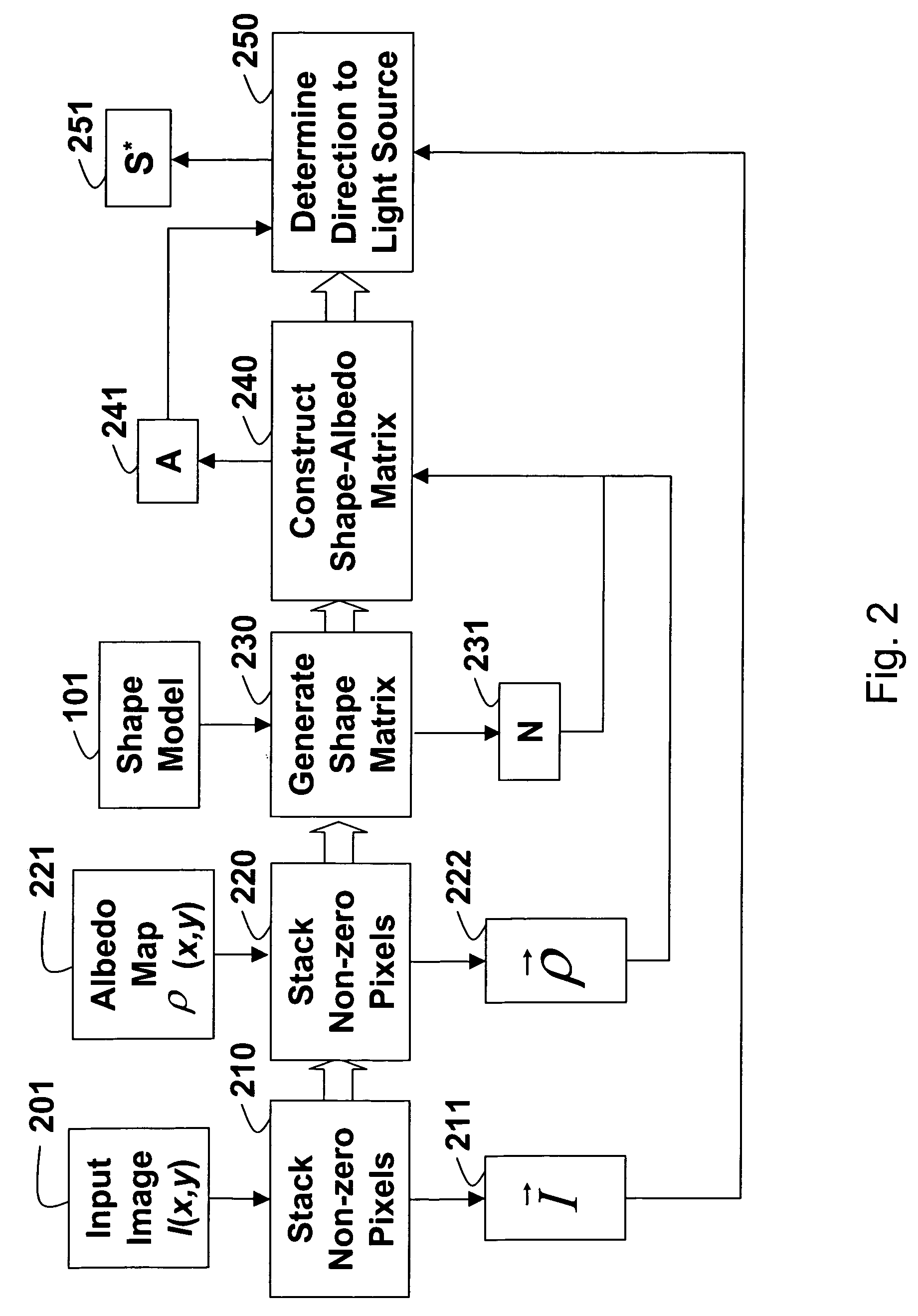Face relighting for normalization of directional lighting
a technology of directional lighting and face relighting, applied in the field of image processing, can solve problems such as the difficulty of designing systems that are invariant to arbitrary lighting, and achieve the effect of high accuracy and efficient estimation
- Summary
- Abstract
- Description
- Claims
- Application Information
AI Technical Summary
Benefits of technology
Problems solved by technology
Method used
Image
Examples
Embodiment Construction
[0025]Lighting Estimation
[0026]As shown in FIG. 1, my invention uses a generic 3D shape model 101 and a Lambertian or diffuse reflectance illumination model 102 for photometrically normalizing images of objects, e.g., faces. In the illumination model 102 diffuse reflectance has a constant bi-directional reflectance distribution function (BRDF). These models are used for object identification. The example application used to describe my invention is face identification and / or verification. There, the problem is to match an unknown face image to images in a database of known face images.
[0027]A face can have some specular reflection, due to secretion of sebum oil by sebaceous glands in the skin. However, the specular reflection is not always consistent. Therefore, the specular reflection is of little use in face identification. Hence, my illumination model 102 includes only Lambertian and ambient components.
[0028]As shown in FIG. 2, let I(x, y) be the intensity at a pixel (x, y) in an...
PUM
 Login to View More
Login to View More Abstract
Description
Claims
Application Information
 Login to View More
Login to View More - R&D
- Intellectual Property
- Life Sciences
- Materials
- Tech Scout
- Unparalleled Data Quality
- Higher Quality Content
- 60% Fewer Hallucinations
Browse by: Latest US Patents, China's latest patents, Technical Efficacy Thesaurus, Application Domain, Technology Topic, Popular Technical Reports.
© 2025 PatSnap. All rights reserved.Legal|Privacy policy|Modern Slavery Act Transparency Statement|Sitemap|About US| Contact US: help@patsnap.com



